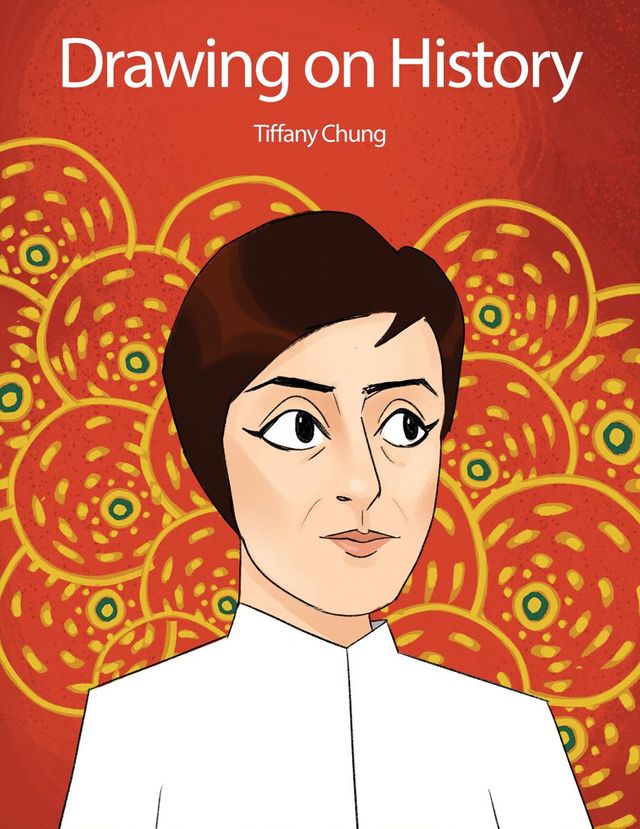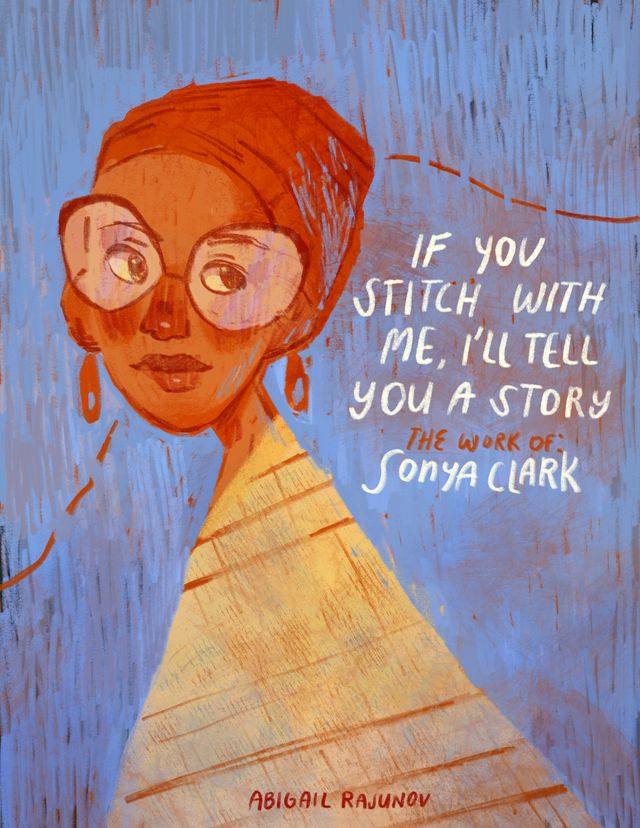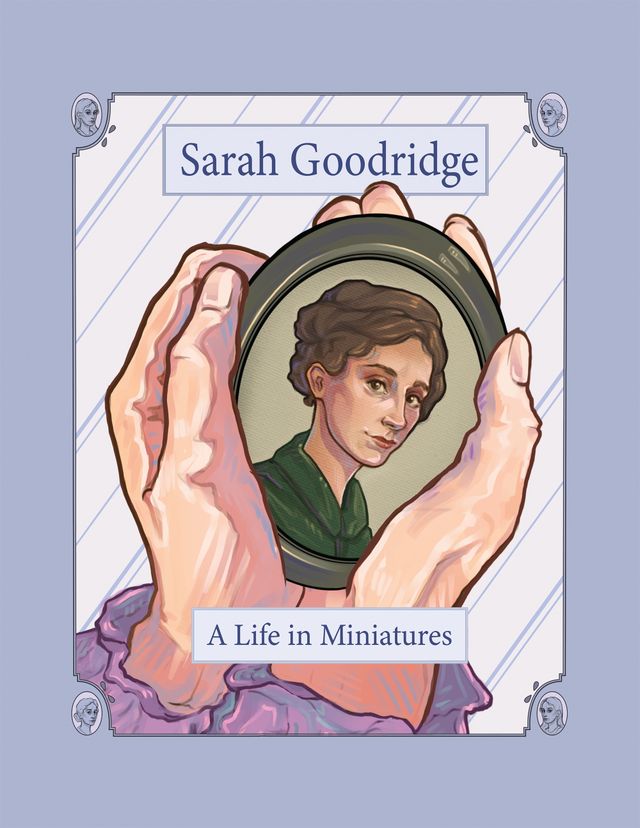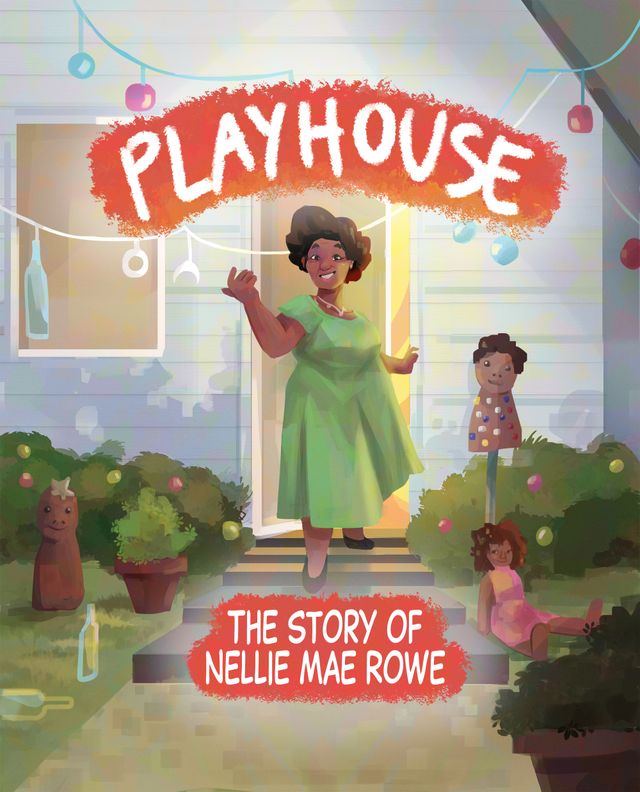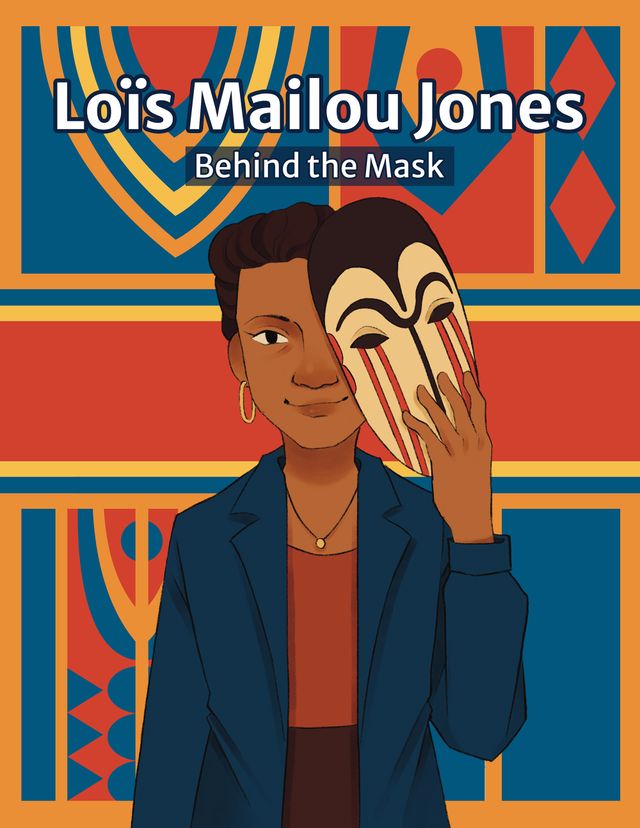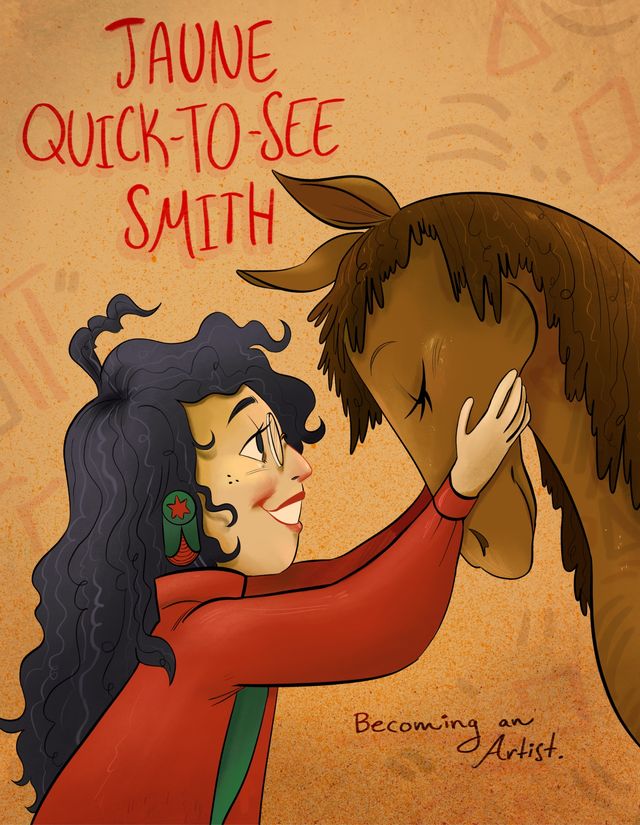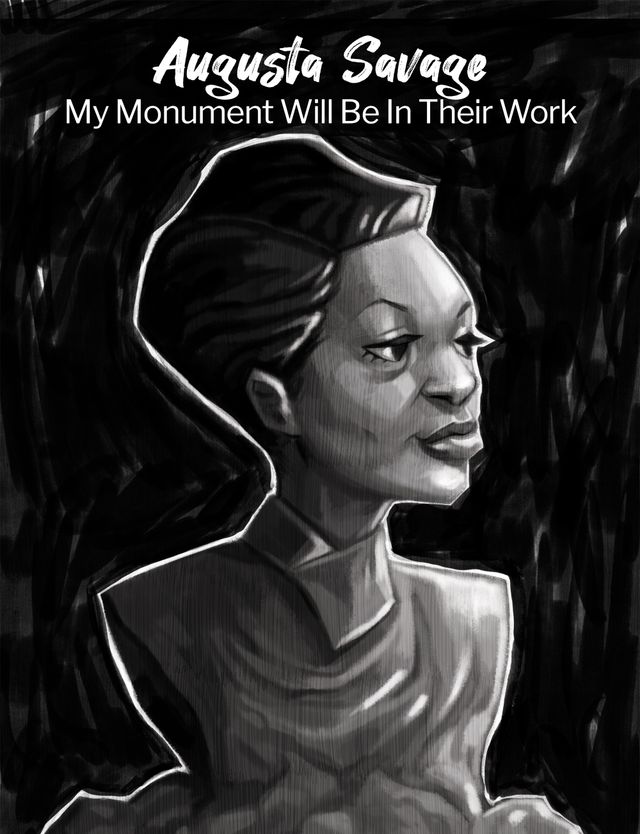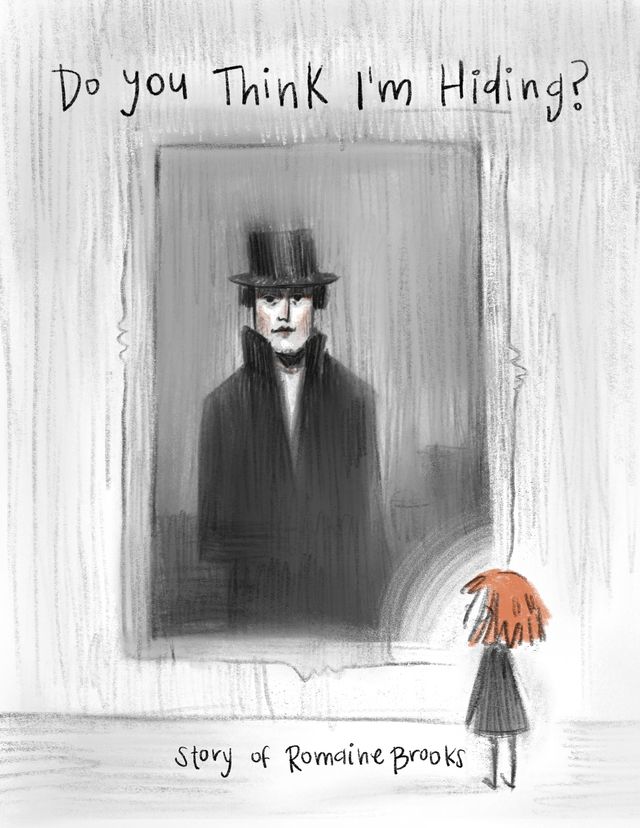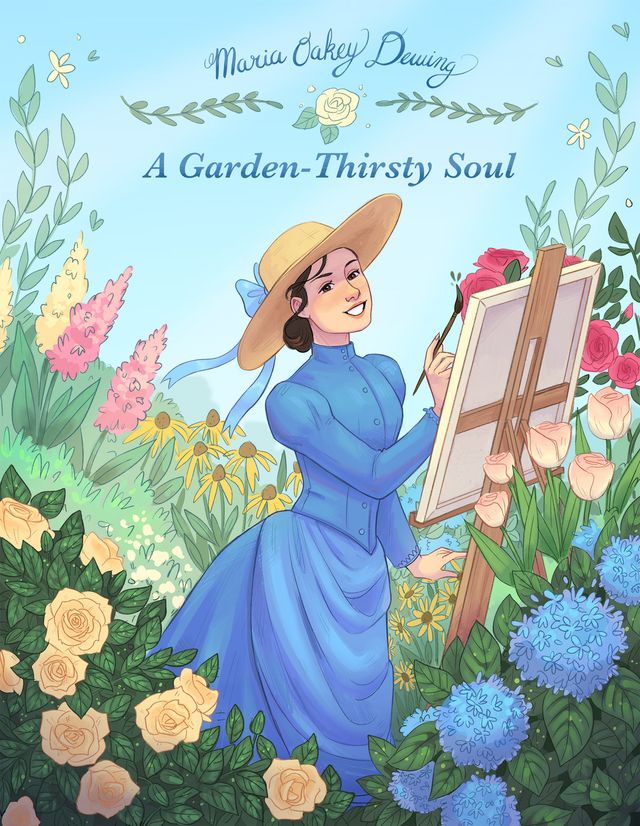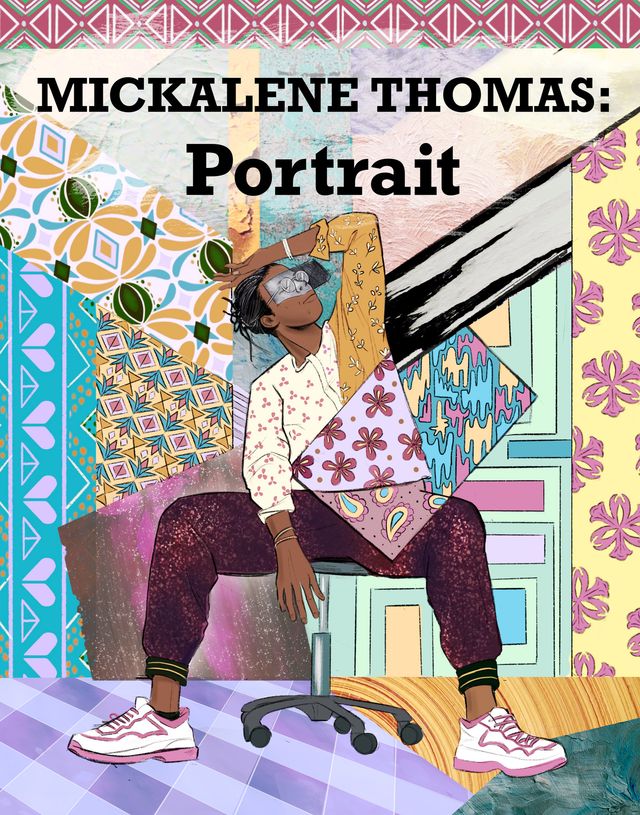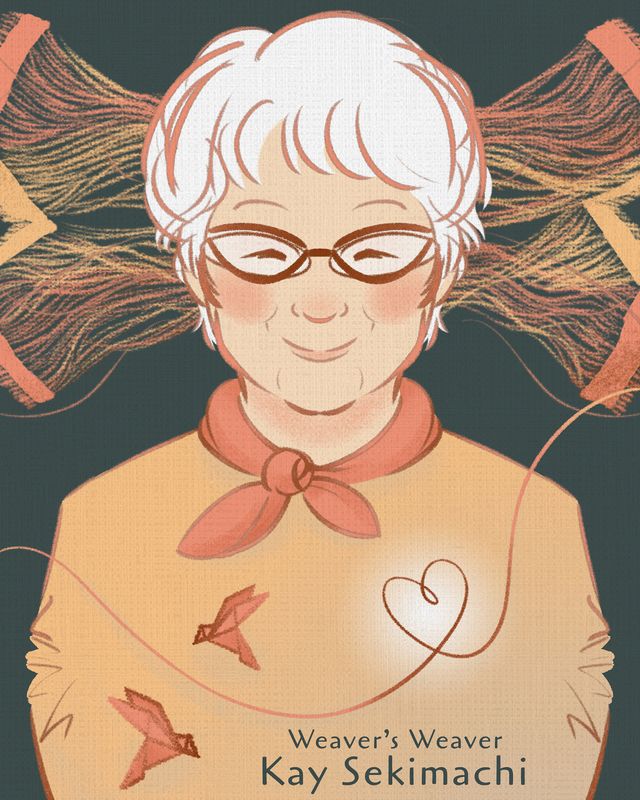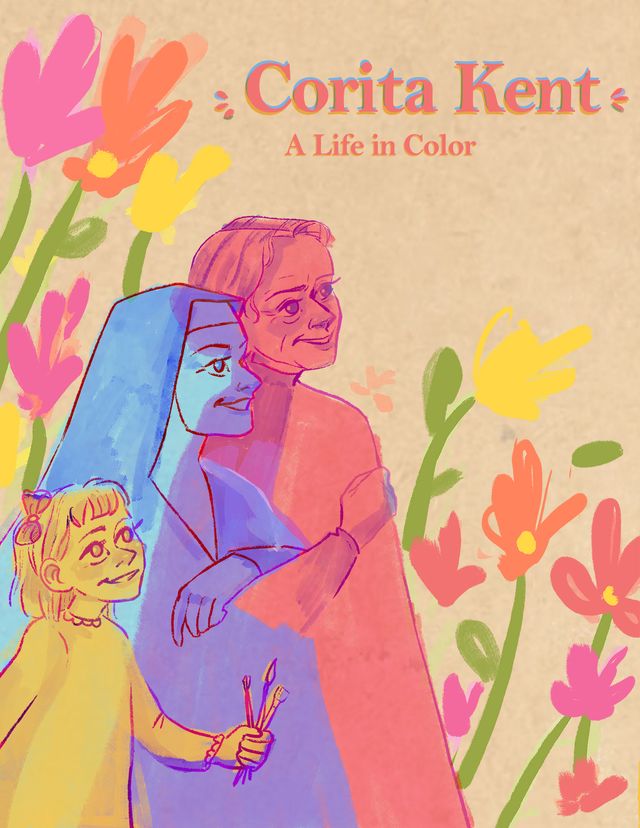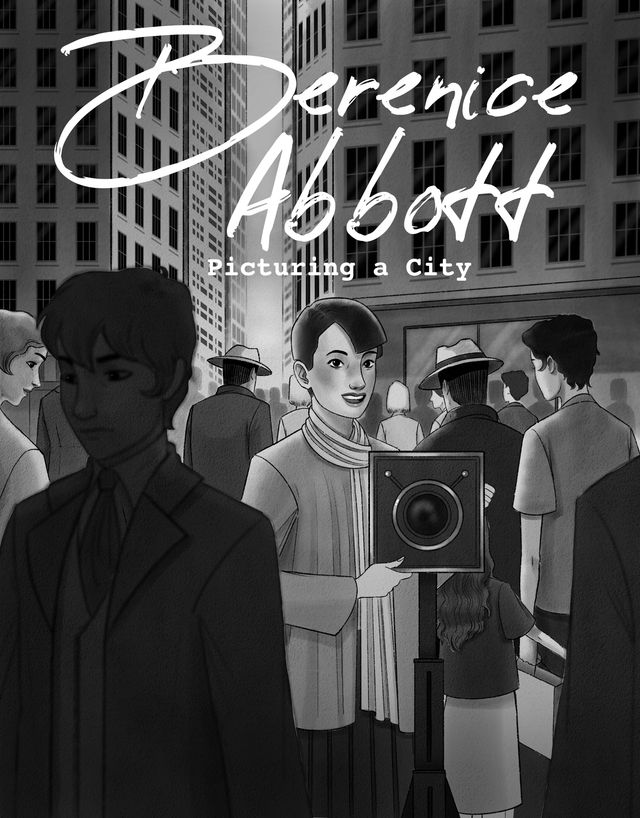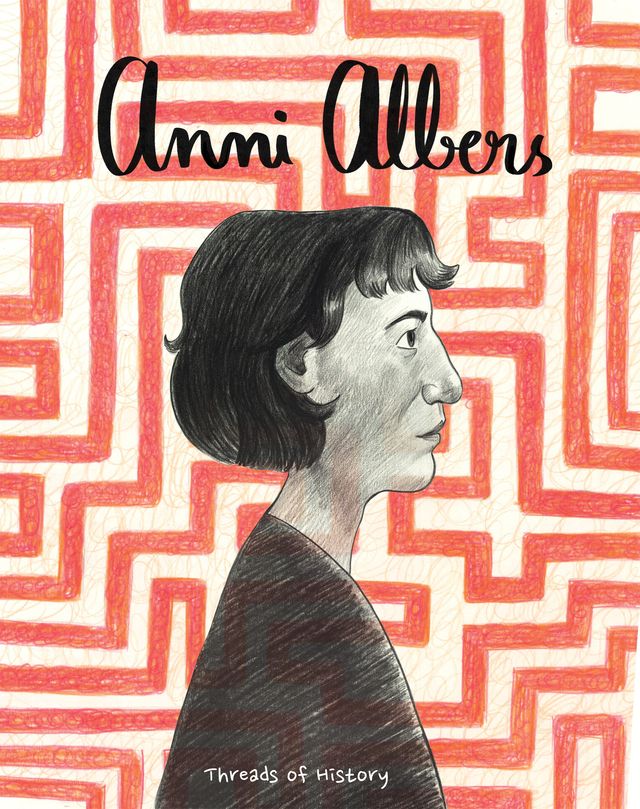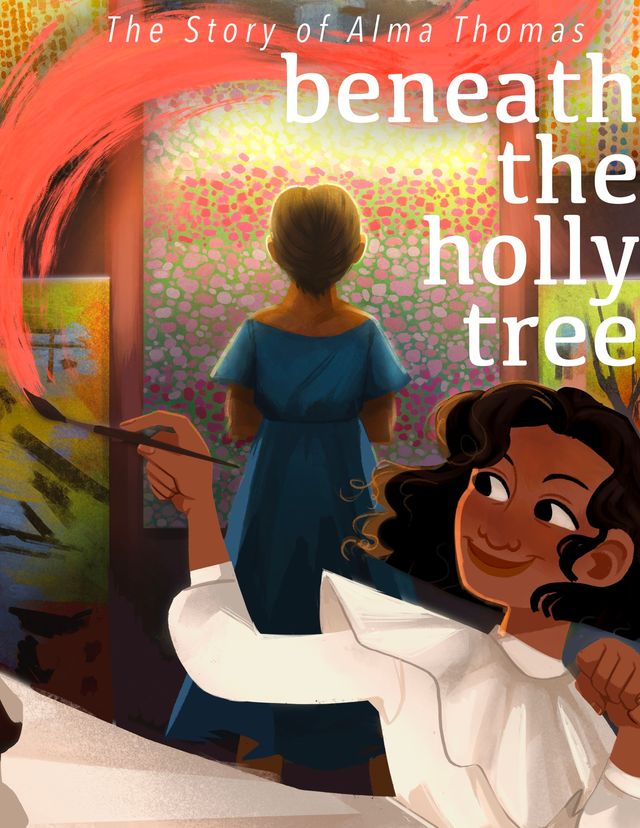This comic is part of a series Drawn to Art: Ten Tales of Inspiring Women Artists that illuminates the stories of ten women artists in the collection of the Smithsonian American Art Museum. Inspired by graphic novels, these short takes on artists’ lives were each drawn by a woman student-illustrator from the Ringling College of Art and Design.
The daughter of a Haitian father and an Ojibwe mother, Edmonia Lewis overcame many obstacles before finding success as a sculptor in Rome, where her fame brought countless visitors to her studio.
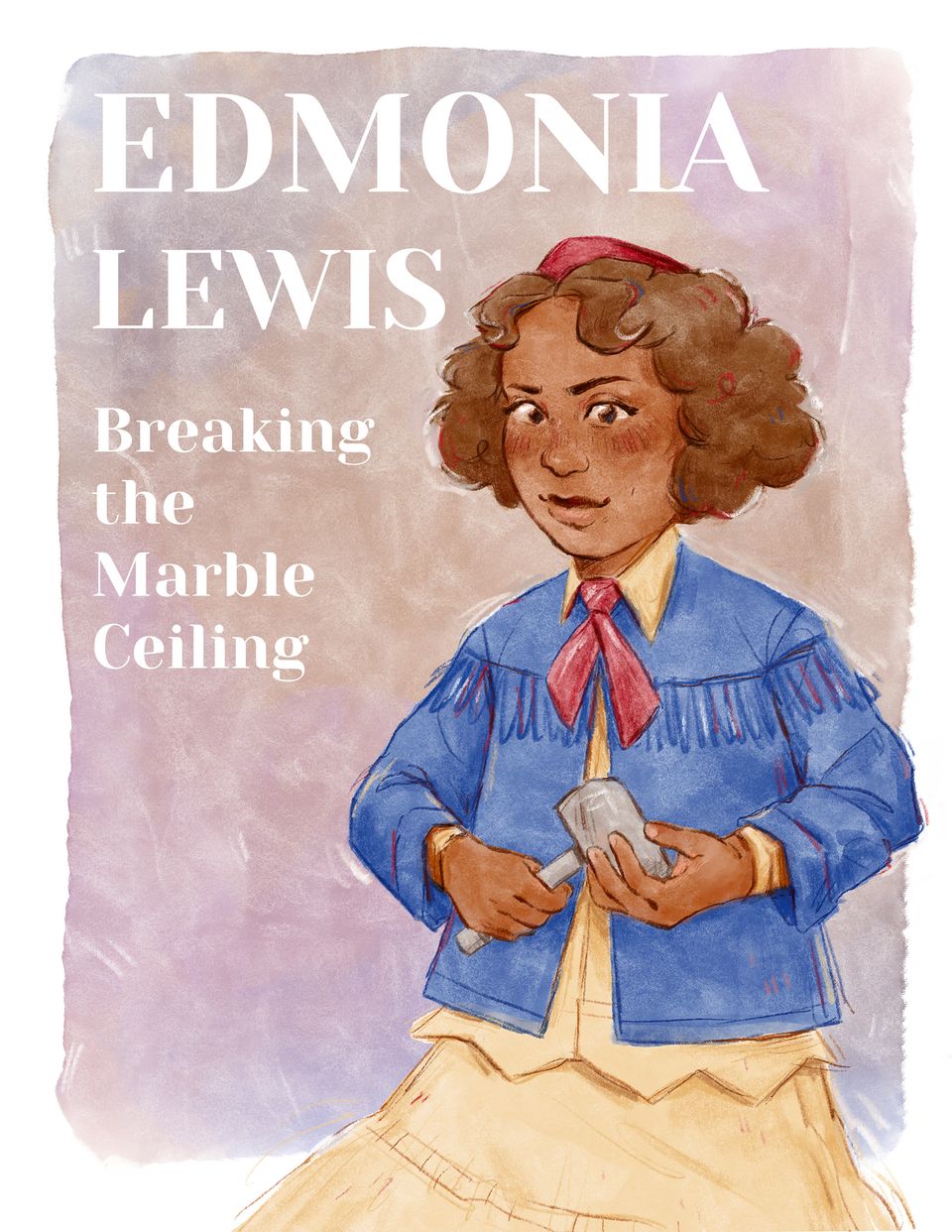
An illustration of a girl with curly brown hair, brown eyes, brown skin, and rosy cheeks standing in 3/4 profile facing out of the page. She is wearing a blue jacket with fringe along the shoulders, a cream-colored shirt with a pointed collar, a pink tie around her neck, a small red sculptor’s cap--a close-fitting brimless hat--on her head, and a cream-colored skirt that flows out of the frame of the image. In her hand she holds a mallet, her other hand cradles the head of the hammer. She stares straight out of the page with an expression of fierce determination on her face. Behind her, is a purple background in a washed, watercolor effect. Text reads, “Edmonia Lewis: Breaking the Marble Ceiling.”
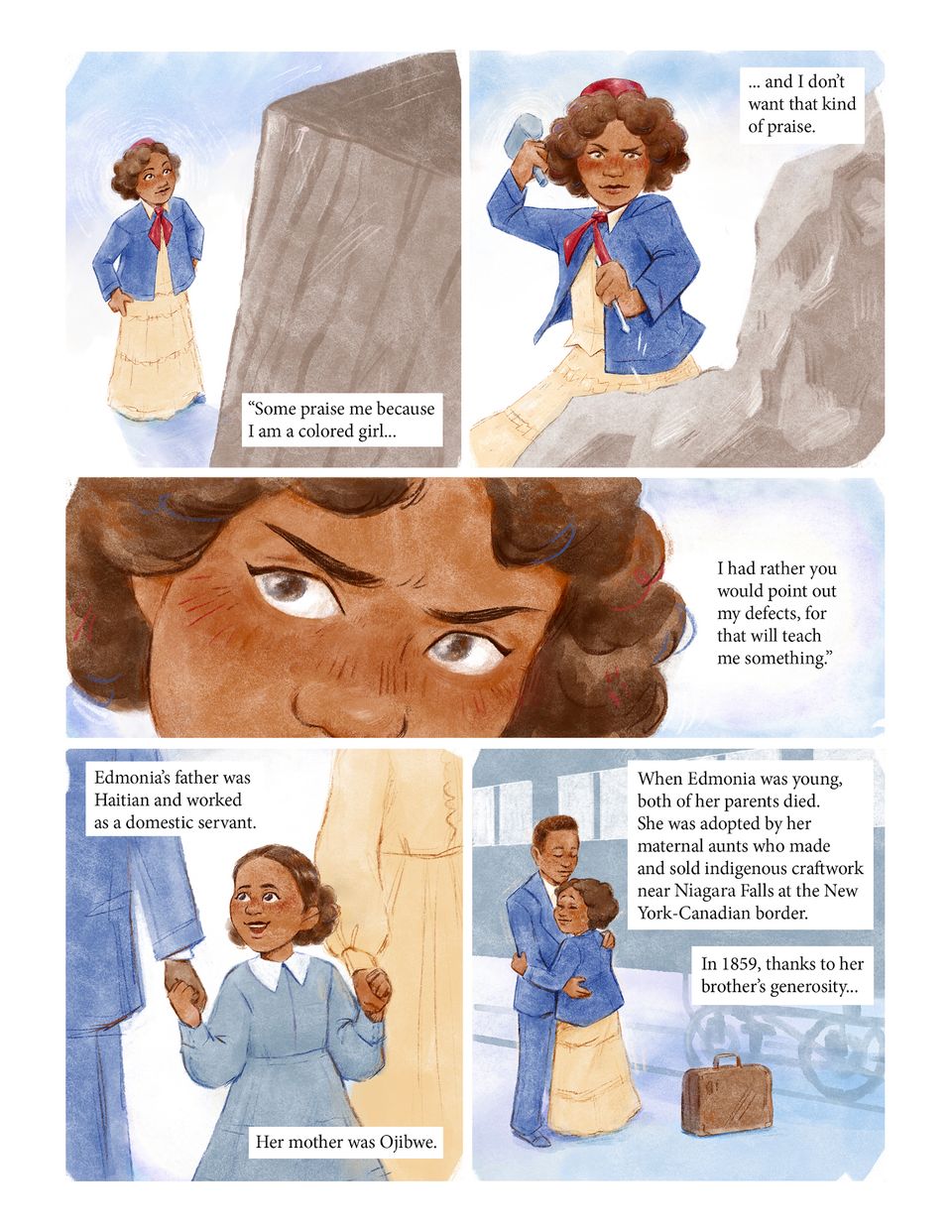
Panel one: The full-length figure of a young Edmonia Lewis is depicted from a high vantage point. She stands with her hands on her hips. She wears the same outfit as the cover image, a blue jacket and full cream skirt with a soft blue watercolor background behind her. Edmonia stares up at a large, square piece of white-gray marble. She narrates. Text reads, "some praise me because I'm a colored girl...” Panel two: The angle is now from below, and Edmonia as she determinedly raises the hammer above her head, she holds a chisel in her other over the large stone. The marble now bares the roughed-out shape of a head and torso of a human figure. She continues narrating. Text reads, “...and I don’t want that kind of praise.” Panel three: A close-up of Edmonia’s eyes with slightly furrowed brow and her eyebrows lowered in intensity. She continues to narrate. Text reads, “I had rather you would point out my defects, for that will teach me something.” Panel four: Edmonia is drawn as a young girl, about 6 years old, in a pastel blue dress with long sleeves and a white, Peter Pan collar. Her brown hair is in short pig tails. She is holding the hands of two adults, a man in a suit the same light blue color as Edmonia’s dress, and a woman in a cream dress with long sleeves. The frame crops the couple so all it contains is the adults’ arms and part of the length of their bodies. Both of their hands are brown. Edmonia is smiling up at the man. Text reads, “Edmonia’s father was Haitian and worked as a domestic servant. Her mother was Ojibwe.” Panel five: Edmonia is a young woman wearing a blue jacket and full-length cream skirt. She stands hugging a young man with dark brown hair, brown skin, and wearing a blue suit. He stands a head taller than she does, they both have their eyes closed and soft smiles on their faces, their arms are wrapped around each other. The windows and wheels of a train are behind them painted in a soft grey blue. A brown leather suitcase is at Edmonia’s feet. Text reads, “When Edmonia was young, both of her parents died. She was adopted by her maternal aunts who made and sold indigenous craftwork near Niagara Falls at the New York- Canadian border. In 1859, thanks to her brother's generosity...”
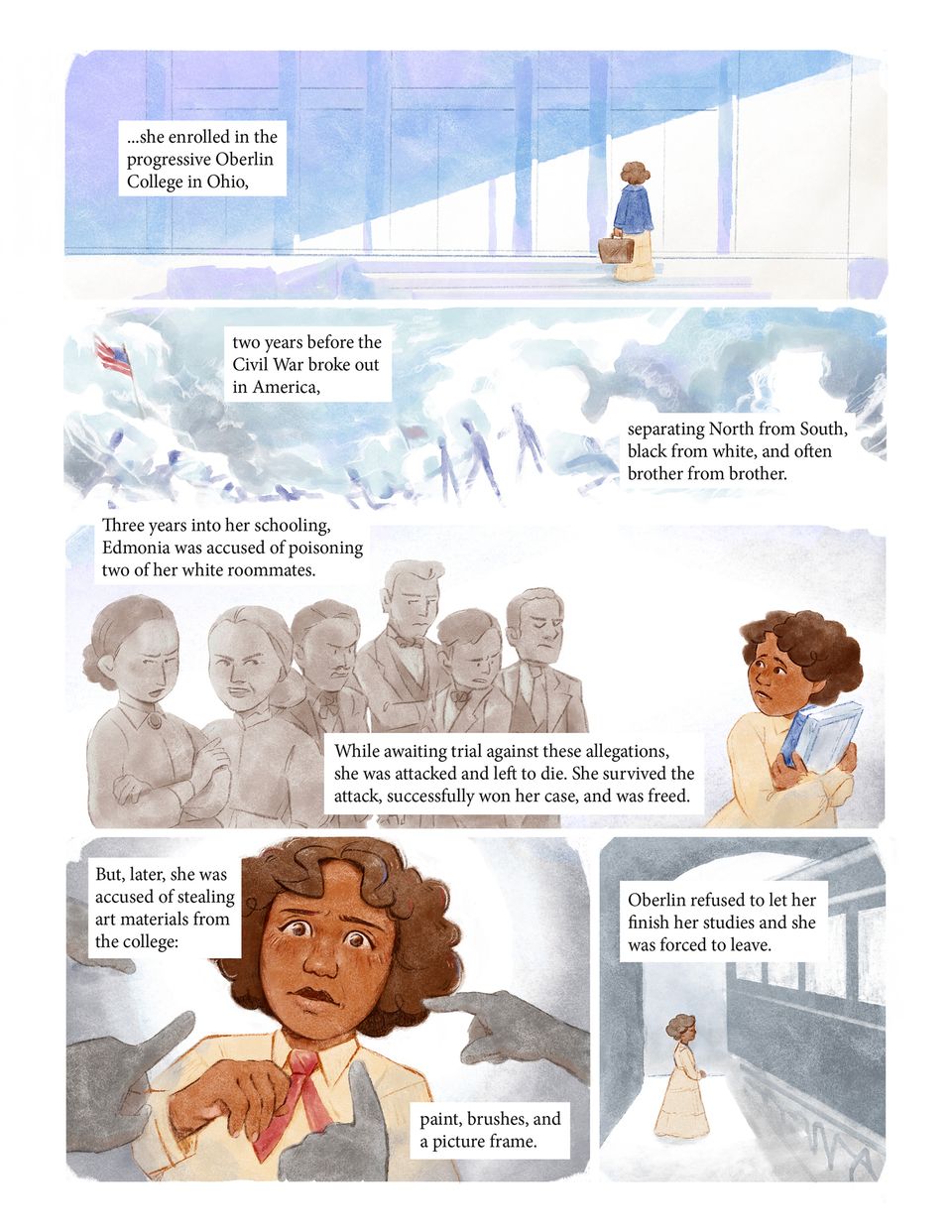
Panel one: Edmonia’s back is illuminated by a sunbeam as she climbs up a flight of steps toward a door flanked by a row of pillars. She is wearing her blue jacket, full-length cream skirt and holding her brown leather suitcase. She is small and alone, and the building entrance is painted in soft washes of light blue watercolor, so it fades to the background. Text reads, “...she enrolled in progressive Oberlin College in Ohio,” Panel two: Small blurred gray figures are framed by billowing clouds of smoke with an American flag in the upper left corner. Text reads, “two years before the Civil War broke out in America, separating North from South, Black from white, and often brother from brother.” Panel three: Edmonia wears a cream dress. She is frowning with concern, while clutching a book to her chest and looking over her shoulder. Behind her are six figures painted in gray scale. Two women, one with her arms crossed, both scowling at Edmonia. Four men stand next to them, they are smirking, angry and stare at Edmonia. Text reads, “Three years into her schooling, Edmonia was accused of poisoning two of her white roommates. While awaiting trial against these allegations, she was attacked and left to die. She survived the attack, successfully won her case, and was freed”. Panel four: A close-up of Edmonia, wide eyed with fear, her hand raised to her chest, fingers curled in protection. She is bare headed with soft brown curls around her face, in a cream-colored long-sleeve shirt with a red tie at her throat. Multiple hands, painted in gray, point at her face accusingly. Text reads, “But, later, she was accused of stealing art materials from the college: paint, brushes, and a picture frame.” Panel five: Edmonia in her cream-colored dress stands alone, small, on the platform of a train station. The arched ceiling, the background, and the waiting train next to her are all painted in gray. Edmonia stands with her hands clasped in front of her and her head slightly bowed. Text reads, “Oberlin refused to let her finish her studies and she was forced to leave.”

Panel one: Edmonia is standing, full length in her long cream-colored dress. She smiles as she gestures and speaks to four men in suits and jackets. Edmonia is in full color, but the men are all in grays. They all look happy and animated. Blue curtains frame the room, and the rough figural forms of two grey sculptures are in the foreground. Text reads, “Edmonia made her way to Boston where she met several abolitionists such as William Lloyd Garrison. She found her way to the studio of the renowned sculptor Edward Brackett, who became a mentor. Abolitionists such as Charles Sumner, Wendell Phillips, and Garrison himself, became the subject of Edmonia’s work.” Panel two: Edmonia, wearing a full-length cream dress with a red necktie and sculptor’s cap, looks over a wood railing with ship’s mast, nets, blue sky and clouds are behind her. Her left hand is raised to hold her hat on her head. Her eyes are wide and her mouth open in surprise. Text reads, “When Edmonia earned enough money from selling her art she travelled to Europe. She decided to live and work in Rome.” She begins to narrate. Text reads, "I was practically driven to Rome in order to obtain the opportunities for art culture, and to find a social atmosphere where I was not constantly reminded of my color...” Panel three: Edmonia, wearing her blue jacket and cream skirt, is holding a mallet and chisel. She is using the tools to carving a large stone. It looms over her, much larger than she is. Her mallet is raised high, and she holds the chisel next to the stone. Three figures are in the foreground of the scene with their backs to us, drawn in grey scale. They are watching Edmonia carve the stone. The scalloped edge of an awning is above their heads. Edmonia finishes her quote. Text reads, “...The land of liberty had not room for a colored sculptor.” Text reads, “People from far and near came to her studio to watch Edmonia work.” Panel four: Edmonia stands next to a large white marble sculpture. It is female form, seated in a high back chair, head thrown back and tilted to the left, eyes closed, in flowing robes. There is a crown and headdress on the sculpture’s head. Edmonia has her left hand resting on the sculpture, her right holding the mallet. She is wearing a blue jacket, cream shirt and full skirt and the red tie and sculptor’s cap on her head. She gazes straight at the viewer. Text reads, “It was during this time that she created the work she is most known for, ‘The Death of Cleopatra.’”
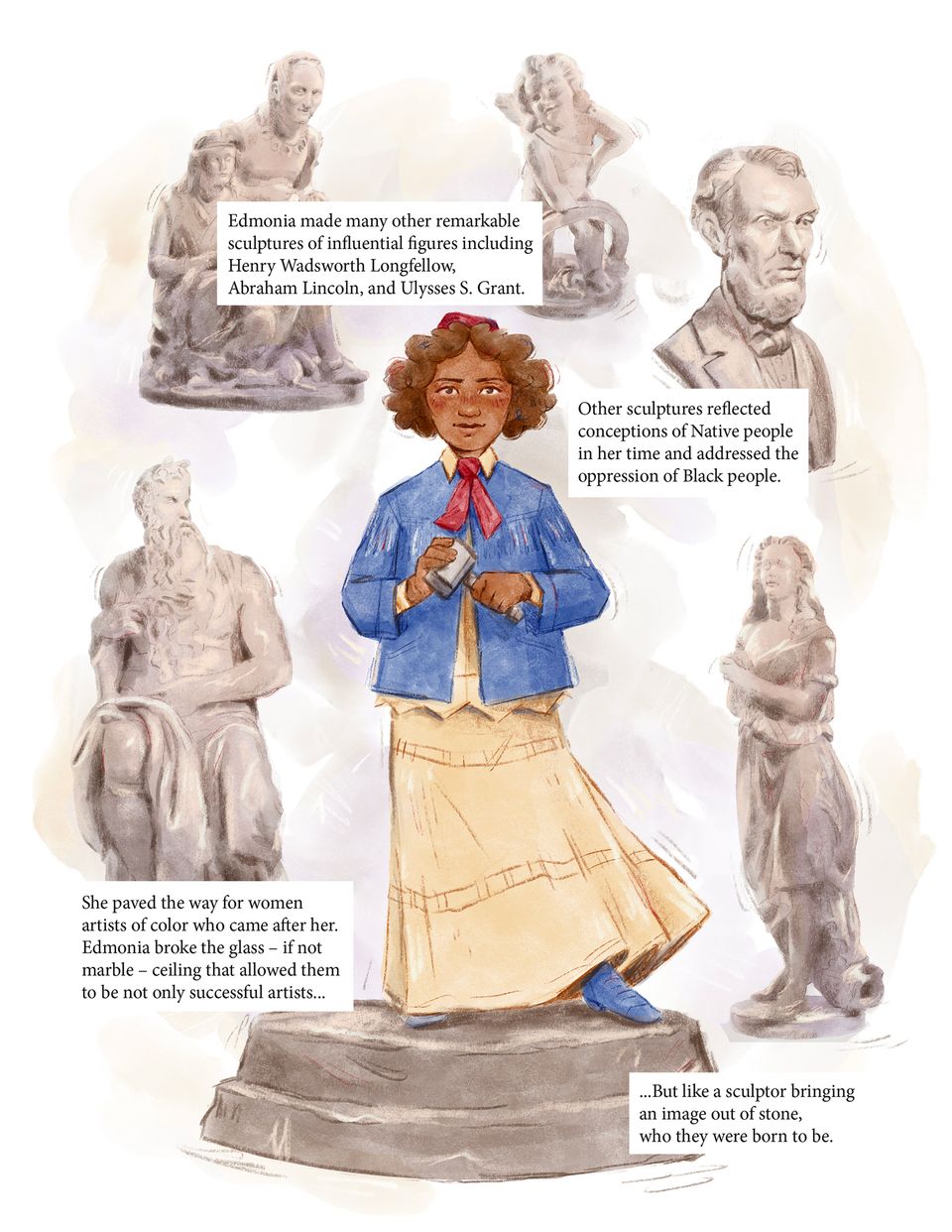
Panel one: Edmonia stands, full length, on a raised platform. She takes up the center of the page. She wears her blue jacket, cream shirt and full skirt, red necktie and sculptor’s cap. She holds a mallet in her left hand with her right hand resting on top of the head of the mallet. She looks straight out of the page with a soft smile on her face and a look of confidence on her face. She's surrounded by drawings of five white marble sculptures. In a clockwise motion starting from left to right, there are statues of: a seated male figure similar to Greek gods, two Native Americans, one cupid, a bust of Abraham Lincoln, and a standing female. Text reads, “Edmonia made many other remarkable sculptures of influential figures including Henry Wadsworth Longfellow, Abraham Lincoln, and Ulysses S. Grant. Other sculptures reflected conceptions of Native people in her time and addressed the oppression of black people. She paved the way for women artists of color who came after her. Edmonia broke the glass - if not marble - ceiling that allowed them to be not only successful artists…But like a sculptor bringing an image out of stone, who they were born to be.”
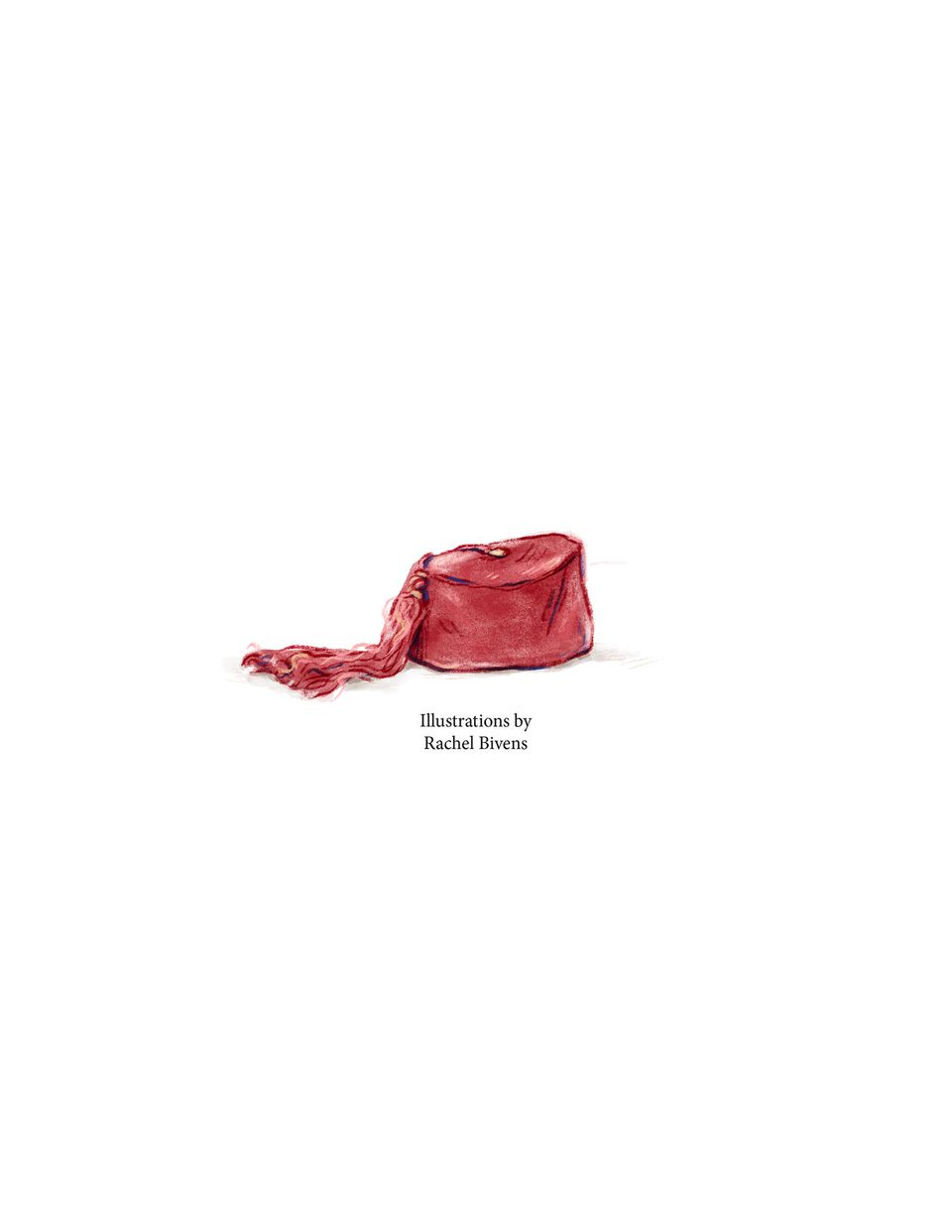
A red sculptor’s cap with a long tassel sits in the middle of the page and the words below read, “Illustrations by Rachel Bivens”














